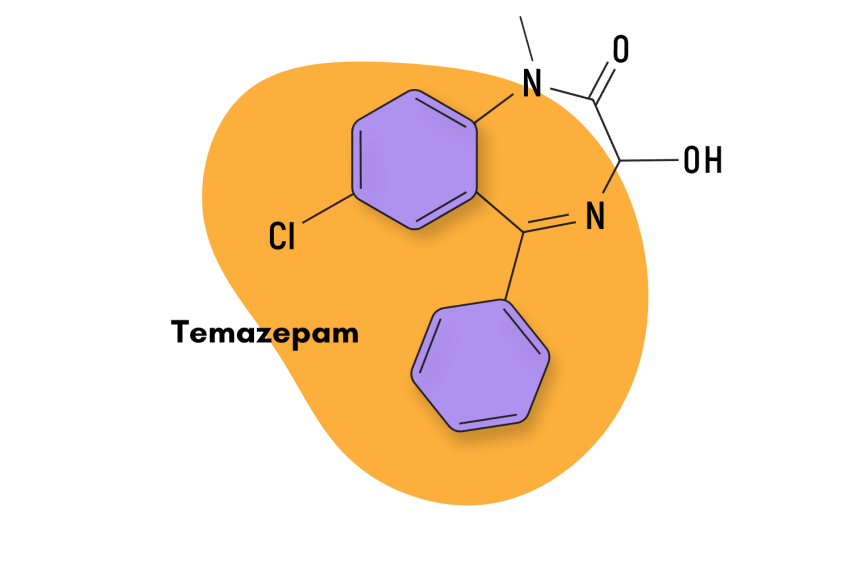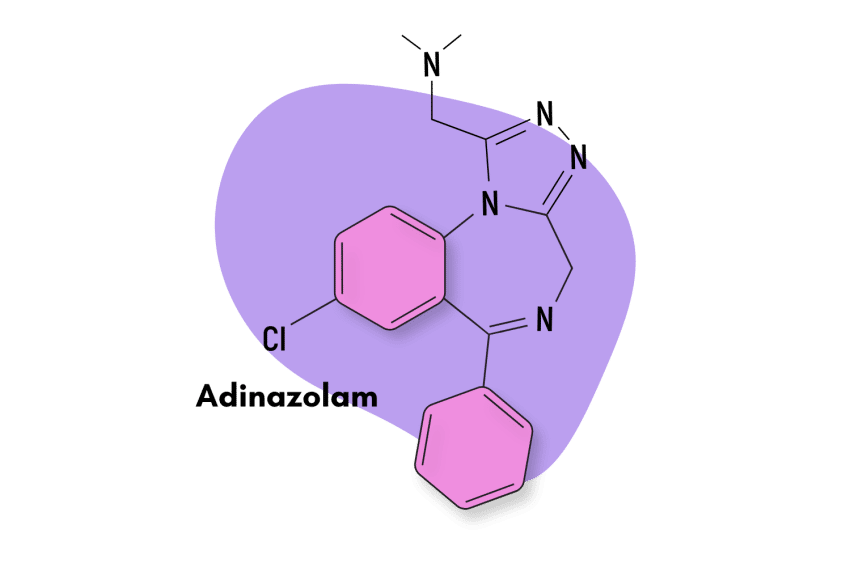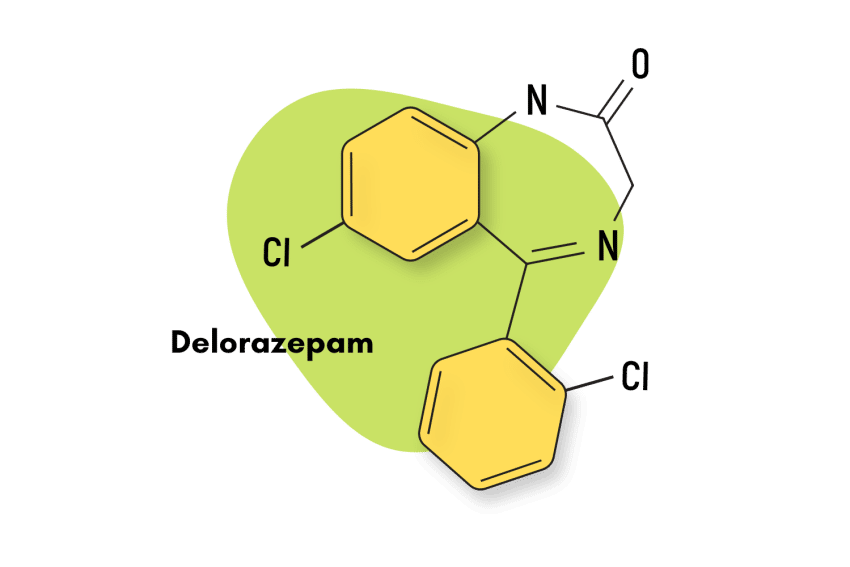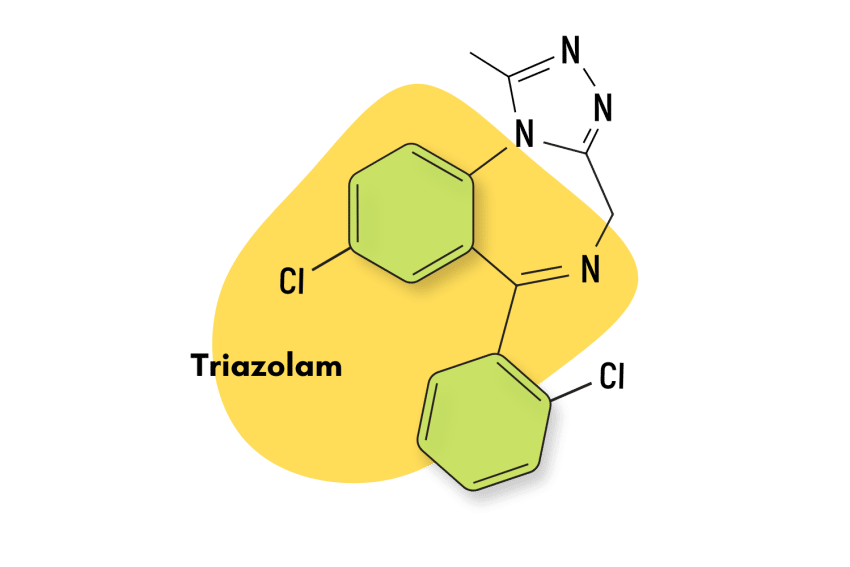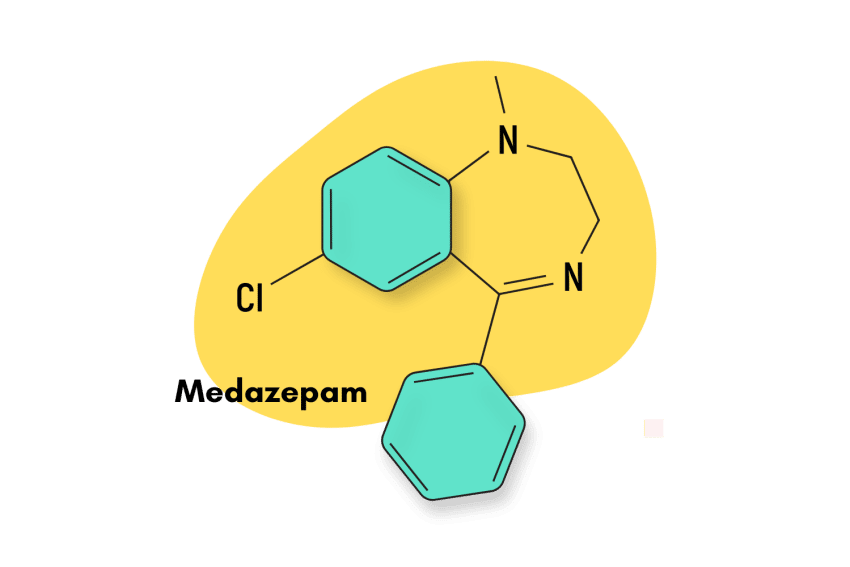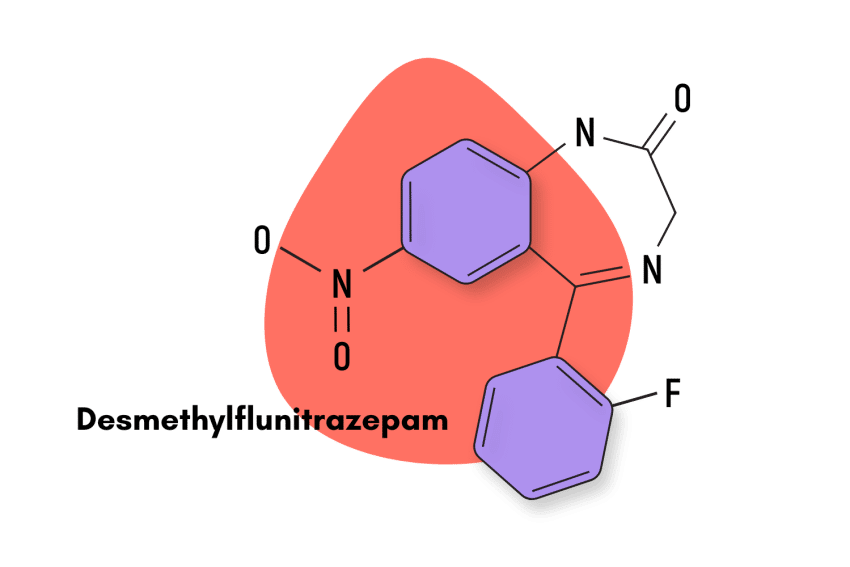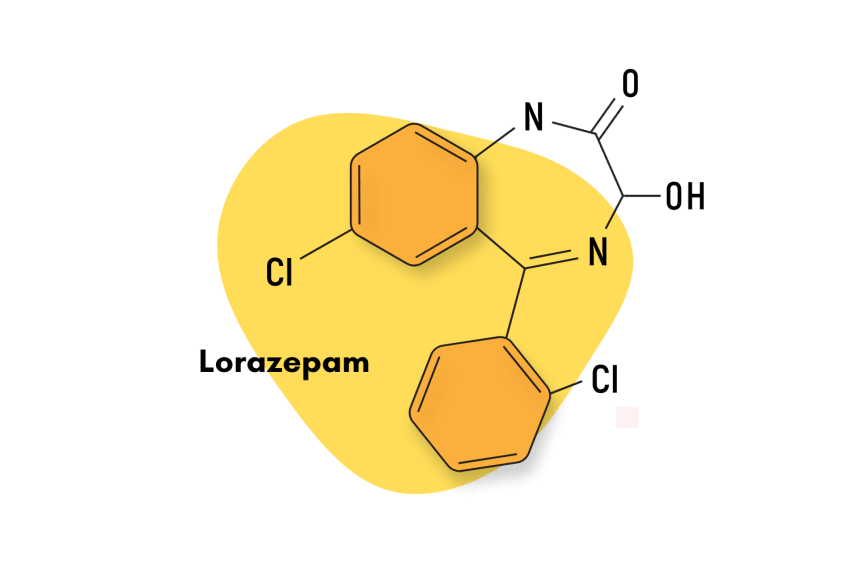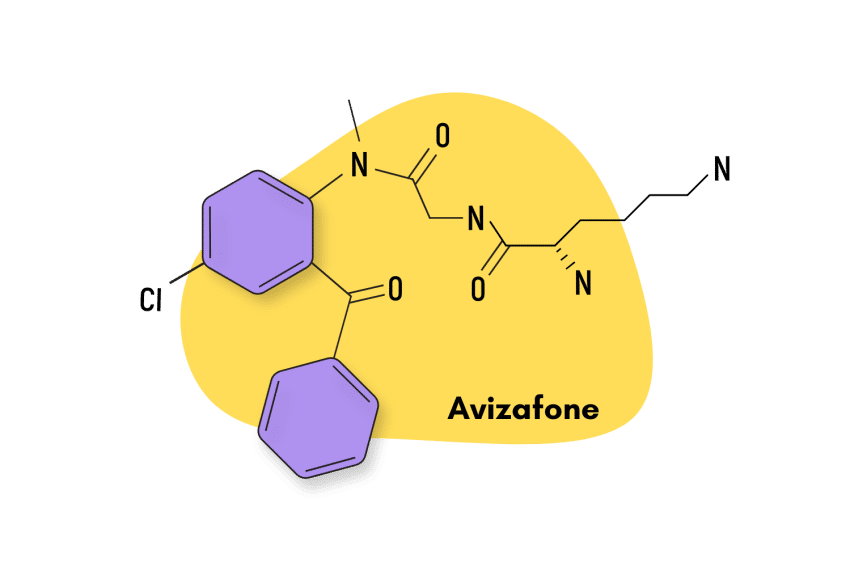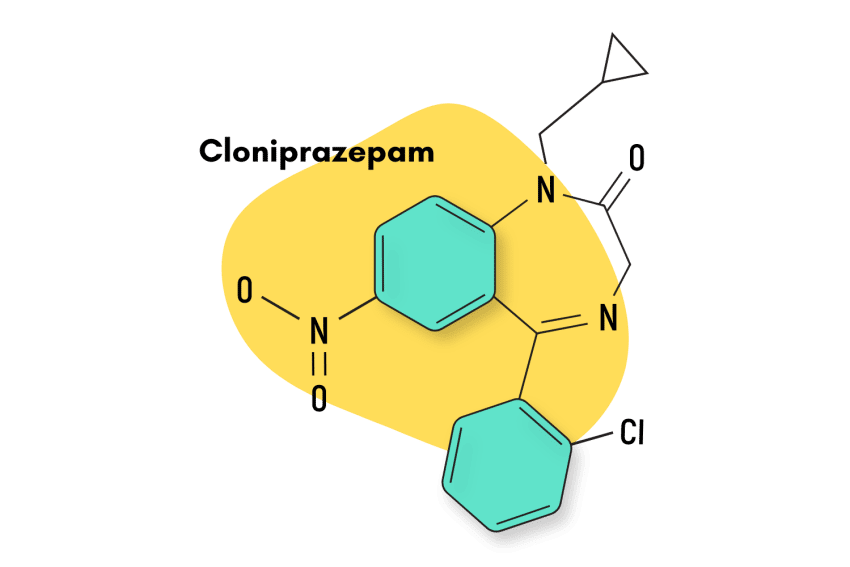Camazepam Fact Sheet: Dosage, Safety, & Natural Alternatives
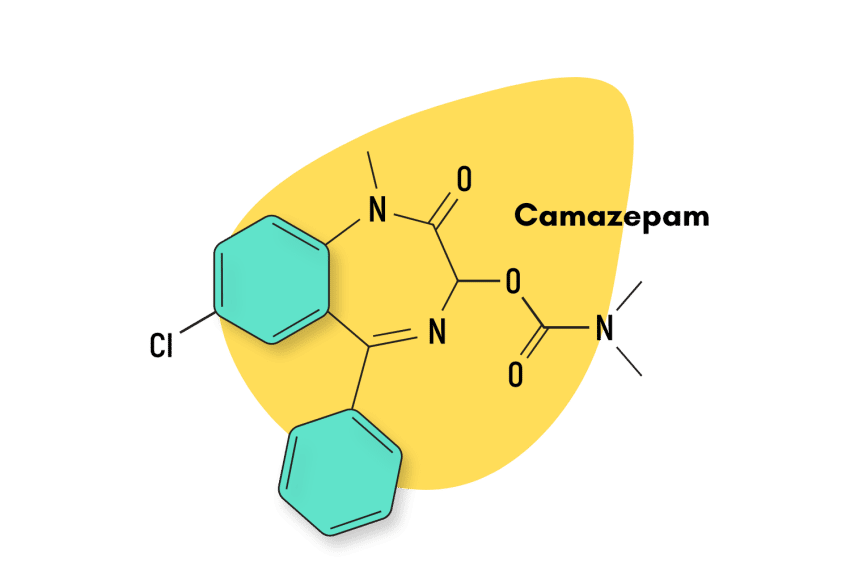
Camazepam is the active metabolite of diazepam (Valium), a commonly used benzodiazepine drug.
Like other benzodiazepines, camazepam possesses anticonvulsant, anxiolytic, hypnotic, and muscle relaxant properties. However, it is most commonly used for treating anxiety. Its hypnotic and anticonvulsant effects are considered weaker than those of other benzodiazepines [1].
For recreational drug users, this reduced sedative action makes camazepam an attractive option and very popular in the designer drug community.
Unfortunately, benzodiazepines such as camazepam are also highly addictive. The Drug Enforcement Administration (DEA) has classified benzodiazepines, including camazepam, as Schedule IV substances. This means benzodiazepines are drugs with abuse potential but less addictive than substances in Schedule III, which include ketamine, hydrocodone, and buprenorphine.
Camazepam Specifications
| Status | Approved 💊 |
| Common Dose | 40 mg |
| PubChem ID | 37367 |
| CAS# | 36104-80-0 |
IUPAC Name: (7-chloro-1-methyl-2-oxo-5-phenyl-3H-1,4-benzodiazepine-3-yl) N,N-dimethylcarbamate
Other Names: Albego, Limpidon, and Paxor
Metabolism
Camazepam is metabolized by the human liver microsomal enzymes into more than ten metabolites, some of which are active and possess anticonvulsant properties. Out of the ten metabolites, only 2, namely temazepam, and oxazepam, are effective as an anxiolytic and have comparatively lower anticonvulsant, sedative, and motor-impairing effects than camazepam [2].
Duration of Effects
Camazepam starts to show its effects within 45 to 90 minutes after intake. The duration of the effects is 8 to 12 hours.
What is the Average Dose of Camazepam?
The dose depends on the condition of the individual. An oral dose of 10-20 mg is commonly used for insomnia and anxiety disorders [3].
How Does Camazepam Work?
Camazepam is a benzodiazepine that works by binding to GABA (gamma-aminobutyric acid) receptors in the brain. GABA is an important inhibitory neurotransmitter in the central nervous system. GABA receptors are classified into three groups —A, B, and C receptors. Benzodiazepines, such as camazepam, specifically bind to GABA type A receptors [4].
Once GABA binds to these receptors, it opens chloride ion channels, resulting in an inward flow of chloride ions into the neuron. This causes neuronal hyperpolarization and decreases the firing rate of neurons and, consequently, their activity [5].
The result of these events is sedation, skeletal muscle relaxation, hypnosis, anxiolysis, and induces an anticonvulsant activity [6].
Is Camazepam Safe? Risks & Side Effects
Like other benzodiazepines, camazepam should be used strictly under the supervision of a doctor. Even with therapeutic doses, dependence may develop if the drug is used regularly and may cause withdrawal symptoms if stopped abruptly.
However, camazepam has fewer side effects compared to other benzodiazepines. If more than the recommended dose is taken, disrupted sleep patterns and impaired cognitive performance may occur [3].
One study has shown that the use of camazepam may also cause skin disorders [7].
Alcohol and opioids potentiate camazepam’s effects and increase the risk of serious side effects, including death. Combining these substances can cause unconsciousness, respiratory depression, and asphyxiation.
Harm Reduction: Camazepam
All benzodiazepine drugs carry a high risk of developing dependence. Their sedating effect may be enhanced when taken with other medications that have similar properties. Such drug combinations may cause significant harm to the user and should therefore be avoided.
When using camazepam and other benzodiazepines, it is important to stick to the following harm reduction principles.
Benzodiazepine Harm Reduction Tips:
- 🥣 Don’t mix — Mixing benzodiazepines with other depressants (alcohol, GHB, phenibut, barbiturates, opiates) can be fatal.
- ⏳ Take frequent breaks or plan for a short treatment span — Benzodiazepines can form dependence quickly, so it’s important to stop using the drug periodically.
- 🥄 Always stick to the proper dose — The dosage of benzos can vary substantially. Some drugs require 20 or 30 mg; others can be fatal in doses as low as 3 mg.
- 💊 Be aware of contraindications — Benzodiazepines are significantly more dangerous in older people or those with certain medical conditions.
- 🧪 Test your drugs — If ordering benzos from unregistered vendors (online or street vendors), order a benzo test kit to ensure your pills contain what you think they do.
- 💉 Never snort or inject benzos — Not only does this provide no advantage, but it’s also extremely dangerous. Benzos should be taken orally.
- 🌧 Recognize the signs of addiction — Early warning signs are feeling like you’re not “yourself” without the drug or hiding your habits from loved ones.
- ⚖️ Understand the laws where you live — In most parts of the world, benzodiazepines are only considered legal if given a prescription by a medical doctor.
- 📞 Know where to go if you need help — Help is available for benzodiazepine addiction; you just have to ask for it. Look up “addiction hotline” for more information about where you live. (USA: 1-800-662-4357; Canada: 1-866-585-0445; UK: 0300-999-1212). Avoid camazepam if you have these conditions
Camazepam should be avoided or taken under the careful supervision of a doctor if you have certain conditions, such as:
- Myasthenia gravis (severe muscle weakness)
- Pre-existing respiratory depression or chronic pulmonary illness
- Severe liver disease
- Sleep apnea
Similar Benzodiazepines
Other benzodiazepines similar to camazepam are halazepam, temazepam, diazepam, and alprazolam.
Camazepam vs. other Benzodiazepines [8]
| Camazepam | Temazepam | Halazepam | Diazepam | Alprazolam | |
| Chemical formula | C19H18CIN3O3 | C16H13ClN2O2 | C17H12ClF3N2O | C16H13ClN2O | C17H13ClN4 |
| Route of administration | Oral | Oral | Oral | Intravenous or intramuscular injection | Oral |
| Onset of action | 45 to 90 minutes | less than 30 minutes | Immediate | 15 to 60 minutes | Immediate to 60 minutes |
| Time to peak plasma concentration | NA | 3 hours | 1 to 3 hours | 1 to 1.5 hours | 1 to 2 hours |
| Duration of effects | 8 to 12 hours | less than 8 hours | 14 hours | 20 to 80 hours (long-acting) | 6 to 27 hours (short-acting) |
| Mechanism of action | GABA-A receptor agonist | GABA-A receptor agonist | GABA-A receptor agonist | GABA-A receptor agonist | GABA-A receptor agonist |
| Medical Uses | Anxiety Disorders, Panic disorders, Seizures | Insomnia, Anxiety disorders, Panic disorder | Anxiety disorders, Seizures, Muscle spasms | Seizures, Alcohol withdrawal symptoms, Insomnia, Muscle spasms, Panic disorder, Anxiety disorders | Anxiety disorders, Panic disorder |
Alternatives to Benzodiazepines
Some herbal medicines work by increasing the activity of the neurotransmitter GABA and have effects similar to those of camazepam.
However, not many studies have been done on the use of these medicines in humans. Therefore, it is advised to always consult your doctor before using any of these herbal medicines.
Some natural alternatives to camazepam include the following:
1. Kava
The kava plant (Piper methysticum) contains active substances called kavapyrones, which have effects similar to those of alcohol on the brain. Kava consumption has calming, relaxing, and mood-enhancing effects. It is also used to relieve pain and muscle spasms and can even prevent seizures [9].
2. Gotu Kola
Gotu Kola (Centella asiatica) is a herbal tonic used to treat anxiety disorders and enhance memory and cognitive function. Evidence suggests that Gotu Kola is directly and indirectly associated with the activity of neurotransmitters, mainly GABA [10].
3. Valerian root
Valerian (Valeriana officinalis L.) is a herb known for its hypnotic and sedative properties. It is used for various health conditions such as insomnia, anxiety, headaches, and other problems [11].
4. L-Theanine
L-Theanine is an amino acid found primarily in green and black tea and in some mushrooms. It increases the synthesis of GABA, helping ease anxiety, stress, and insomnia [12].
5. GABA Supplements
GABA can be supplemented to support relaxation and sleep. It’s best consumed alongside other GABAergic supplements because orally consumed GABA barely crosses the blood-brain barrier (BBB). In general, studies suggest high doses are required for this relaxing effect [13].
6. Chamomile
Chamomile is a widely known herbal tea used as a remedy for various conditions such as sleep disorders, anxiety, skin infections, and gastrointestinal discomfort. Studies have suggested that it may modulate the action of neurotransmitters, including GABA, serotonin, dopamine, and noradrenaline [14].
7. Mugwort
Mugwort is another herb that has been widely used in traditional medicine. Studies have suggested that the fractionated constituents of Mugwort bind to GABA A receptors on the same site as benzodiazepines, hence reducing seizures, depression, and anxiety [15].
Camazepam FAQs
Answering some of the most common questions, we get asked about camazepam.
1. How will taking camazepam make me feel?
Camazepam may make you feel relaxed, and it may reduce symptoms of anxiety. It may also make you feel sleepy.
2. Will I become addicted to camazepam if I start taking it?
Using camazepam for a short period — around 2 to 4 weeks — doesn’t usually cause addiction, but the risks increase if you use it longer than that. A history of addiction to any other substance increases your risk of addiction to camazepam. In case you have a history of such addiction, inform your doctor.
3. Do I need to avoid any drugs, foods, or drinks while taking camazepam?
Yes. Amphetamines, psychedelic mushrooms (also known as magic mushrooms), and cannabis may reduce the effect of camazepam (and vice-versa). These agents stimulate the brain and have effects opposite to those of camazepam. A similar opposing effect is produced by caffeine-containing foods and drinks, such as dark chocolate, coffee, energy drinks, and black tea. Therefore, it is best to minimize the use of such foods and drinks while taking camazepam.
Alcohol, opioids, and other CNS-depressing drugs, on the other hand, enhance the effect of camazepam and should therefore be avoided.
References
- Guthy, H. (1975). The medicinal treatment of anxiety in alcoholism in the withdrawal stage (author’s transl). MMW, Munchener Medizinische Wochenschrift, 117(35), 1387-1390.
- Morino, A., Nakamura, A., Nakanishi, K., Tatewaki, N., & Sugiyama, M. (1985). Species differences in the disposition and metabolism of camazepam. Xenobiotica, 15(12), 1033-1043.
- Nicholson, A. N., & Stone, B. M. (1982). Hypnotic activity and effects on the performance of lormetazepam and camazepam-analogs of temazepam. British Journal of Clinical Pharmacology, 13(3), 433-439.
- DeVane, C. L., Ware, M. R., & Lydiard, R. B. (1991). Pharmacokinetics, pharmacodynamics, and treatment issues of benzodiazepines: alprazolam, adinazolam, and clonazepam. Psychopharmacology Bulletin, 27(4), 463-473.
- Jenner, P., Pratt, J. A., & Marsden, C. D. (1986). Mechanism of action of clonazepam in myoclonus in relation to effects on GABA and 5-HT. Advances in neurology, 43, 629-643.
- E Nardi, A., Machado, S., Ferreira Almada, L., Paes, F., Cardoso Silva, A., Jose Marques, R., … & Arias-Carrión, O. (2013). Clonazepam for the treatment of panic disorder. Current Drug Targets, 14(3), 353-364.
- Stricker, B. H. (1984). Skin disorders are caused by the use of camazepam (Albego). Nederlands Tijdschrift Voor Geneeskunde, 128(18), 870-872.
- Griffin, C. E., Kaye, A. M., Bueno, F. R., & Kaye, A. D. (2013). Benzodiazepine pharmacology and central nervous system–mediated effects. Ochsner Journal, 13(2), 214-223.
- Chua, H. C., Christensen, E. T., Hoestgaard-Jensen, K., Hartiadi, L. Y., Ramzan, I., Jensen, A et al. (2016). Kavain, the major constituent of the anxiolytic kava extract, potentiates GABAA receptors: functional characteristics and molecular mechanism. PLoS One, 11(6), e0157700.
- Gohil, K. J., Patel, J. A., & Gajjar, A. K. (2010). Pharmacological review on Centella asiatica: a potential herbal cure-all. Indian Journal of pharmaceutical sciences, 72(5), 546.
- Shinjyo, N., Waddell, G., & Green, J. (2020). Valerian root in treating sleep problems and associated disorders—A systematic review and meta-analysis. Journal of Evidence-Based Integrative Medicine, 25, 2515690X20967323.
- Higashiyama, A., Htay, H. H., Ozeki, M., Juneja, L. R., & Kapoor, M. P. (2011). Effects of l-theanine on attention and reaction time response. Journal of Functional Foods, 3(3), 171-178.
- Boonstra, E., de Kleijn, R., Colzato, L. S., Alkemade, A., Forstmann, B. U., & Nieuwenhuis, S. (2015). Neurotransmitters as food supplements: the effects of GABA on brain and behavior. Frontiers in Psychology, 6, 1520.
- Mao, J. J., Li, Q. S., Soeller, I., Rockwell, K., Xie, S. X., & Amsterdam, J. D. (2014). Long-Term Chamomile Therapy of Generalized Anxiety Disorder: A Study Protocol for a Randomized, Double-Blind, Placebo-Controlled Trial. Journal of clinical trials, 4(5), 188.
- Khan, I., Karim, N., Ahmad, W., Abdelhalim, A., & Chebib, M. (2016). GABA-A Receptor Modulation and Anticonvulsant, Anxiolytic, and Antidepressant Activities of Constituents from Artemisia indica Linn. Evidence-based complementary and alternative medicine: eCAM, 2016, 1215393.

